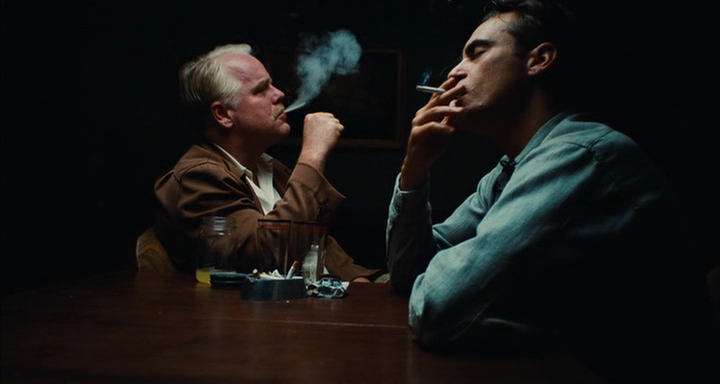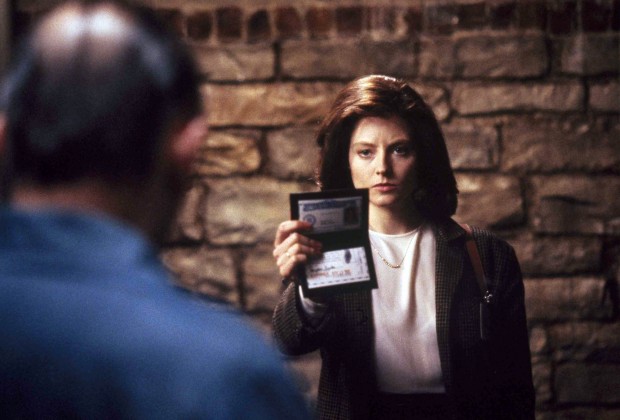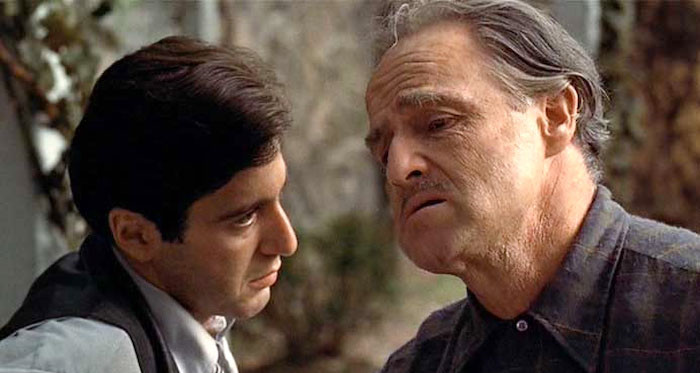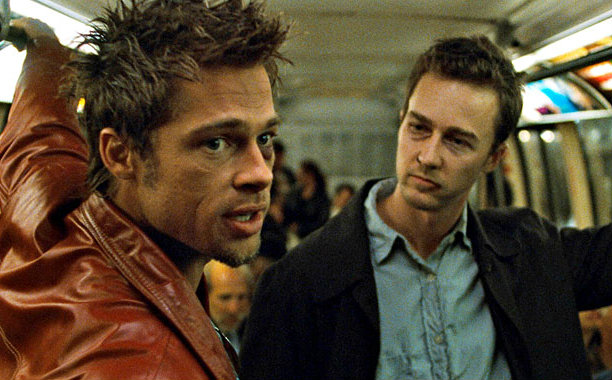
No matter how many great performances a film has, there’s always that one that stands out. Maybe it’s the writing, or the stronger or more outrageous character, or more simply, the right actor getting the right role. Whatever the reason, the results can be electric. But what about those films that have two equally brilliant performances?
Of course, it’s all a matter of opinion, but sometimes a film features two great performances that it’s hard to just single out one. Antagonists almost always steal the show. It’s easy to see why. They don’t play by the rules, they have issues, and they are sometimes eccentric.
Protagonists can be just as engaging and interesting but are less in your face than their foes. Then there are other supporting characters and performances that play friends or general acquaintances that can be just as brilliant.
With that in mind, we look at films that have performances that are equally matched. Owing to great writing, directing and the amazing actors who play them.
1. The Master (2012) – Joaquin Phoenix & Philip Seymour Hoffman

Paul Thomas Anderson’s psychological drama continued his look into the great American past. “The Master” looks at postwar America in the 1950s as cult religions popped up, offering answers to the disillusioned masses. On the surface, it looks like a critique of Scientology as the cult here, called “The Cause,” is similar to that of L. Ron Hubbard’s. But what it’s really about is the relationships within the cult, or more simply the Id, Ego and Superego.
Joaquin Phoenix plays Freddie Quell, a psychologically damaged ex-soldier who joins The Cause to seek help for his many problems and shortcomings. He strikes an unlikely relationship with its charismatic leader, Philip Seymour Hoffman’s Lancaster Dodd. The two men are polar opposites; Quell is a wild beast of impulse and Dodd a showman of intellect. Yet they bond and connect, much to the dismay of some of Dodd’s followers.
Each man sees something in the other that they admire; for Quell it’s to be a well-functioning part of society like his master, and for Dodd, it’s the freedom and impulse of his loyal follower. And in some ways, they rub off on each other, if only it was for a good reason.
Phoenix steals the show with a career-best performance that can only be summed up as one of this century’s best. Complete with a hunched back, slurred speech, weary face and fragile body mass which ironically can still get violent, Phoenix returned to acting better than ever after his “I’m Still Here” hiatus. Hoffman’s performance is less attention-grabbing, but just as good. He’s a man of class (unless he uncharacteristically bursts out “pig fuck!”) and no one had a class quite like Hoffman. Through his performance, you see why Dodd has so many followers who buy into what may ultimately be hogwash. Just watch Hoffman entertain or host a room and try not to be mesmerized.
To put the case to rest, one has to only watch the processing scene between the two actors to witness their power. It’s a highlight scene in a film filled with them. And special mention goes to the seldom seen but always felt Amy Adams, who completes the complex trinity relationship.
2. The Silence of the Lambs (1991) – Anthony Hopkins & Jodie Foster

One of the greatest behind-the-scenes stories in cinema is about how the late great Jonathan Demme had planned to shoot some flashback scenes to intercut Jodie Foster’s retelling of her character’s childhood. But after seeing the sheer acting brilliance of Foster and Sir Anthony Hopkins, he immediately canceled the planned flashback shoot because he wanted to stay on his actors.
Based on Thomas Harris’ bestselling novel about the hunt for a mysterious serial killer with the help of an even more mysterious serial killer who’s behind bars, the enigmatic Dr. Hannibal “the Cannibal” Lecter. Sir Anthony Hopkins stole the show with his 17-minute Oscar-winning turn. It’s strange when you consider how little screen time Hopkins has because his presence looms over the whole film, even when he’s not there. It’s rare for a film that builds up on the hype of a certain character to actually deliver when that character is eventually introduced.
“The Silence of the Lambs” delivers and then some. Hopkins is mysterious, scary, funny and charismatic. A combination that shouldn’t, work but lo and behold, it does.
Jodie Foster’s Clarice Starling is the heart and soul of the story. It’s rare for a procedural to have so much excellent character work and Foster revels in it. She’s a heroine who doesn’t disrespect herself or the audience with cliché troupes. She’s all about the job and it’s fascinating to watch her on the job.
Foster’s accent, her reactions, and her performance in the climax infrared scene are all career highlights. Buffalo Bill’s weird fetishes and crazy dance sequences aside, Foster’s scenes with Hopkins are the real calling card. The chemistry between the two is so palpable that we wish we could spend more time listening to Lecter poke Starling’s head.
3. The Godfather (1972) – Marlon Brando & Al Pacino

What is there left to say about Francis Ford Coppola’s classic “The Godfather” that hasn’t already been said? Marlon Brando made the Don an iconic character for the ages. From that classic opening scene up to the orange slice in his mouth, he’s thrilling to watch. Brando is synonymous with method acting and it pays off tenfold. His take on his character is so unique that it’s a wonder that it works so well.
Compared to all of the other characters and performances in the film, he could’ve easily stood out for the wrong reasons. His accent and relaxed speed of dialogue is hypnotic and reveals layers of emotions and thoughts without being obvious.
Then there’s Al Pacino’s black sheep of the family, who turns away from the family business only to be roped back in. It’s a performance that rightly stands as one of the greatest in cinematic history. A testament to the great writing and Pacino’s work we route for him even as he goes deeper and deeper into the rabbit hole. No actor has made the use of closing doors so emotionally powerful. And the classic scene with the gun in the bathroom with Pacino’s crazy wandering eyes where you see the cogs turning in his head will get you every single time.
Michael is nothing like his father and Pacino’s performance is nothing like Brando’s yet they stand side by side as two equally classic and iconic performances for different reasons.
4. Casablanca (1942) – Humphrey Bogart & Ingrid Bergman

“Casablanca” contains one of the greatest love stories to ever bless the big screen. First, it’s because of the great writing and direction that has so many complexities and layers that it’s not just a simple love story. Second, it’s because of the legendary performances by legendary actors Humphrey Bogart and Ingrid Bergman. Their chemistry will make even the most heartless of cynics choke up at the shared scenes.
Bogart plays the ever witty and quotable Rick who owns and runs a cafe in Casablanca during World War II. When his former flame Ilsa, played by Bergman, comes into town with another man looking for his help, well, she brings out the worst and best in Rick. Relationships can be messy, especially when Nazis are involved. Bogart expertly and subtly shows Rick’s conflictions while looking as cool as hell doing it. We’re still quoting his dialogue after all these years.
Bergman, on the other hand, has the difficult role of playing a woman caught between two men, but she makes it so much more. Like Rick, we want to hate her for breaking our hero’s heart and then prancing back into his life like nothing ever happened. But it’s not that easy. And by the end of the story, we understand her better and the choices she’s made with the cards she’s been dealt. We’re firmly on her side. We’re on both sides. When it comes to pure chemistry, you’ll be hard-pressed to find any greater than one here.
5. Fight Club (1999) – Edward Norton & Brad Pitt

Whereas “The Big Lebowski” is a cult film that inspired the easygoing lifestyle of bowling and weed smoke, “Fight Club” inspired the complete opposite. Based on Chuck Palahniuk’s novel, David Fincher directed a masterpiece that spoke to frustrated males everywhere.
Edward Norton plays a nameless character known only as “the Narrator” who goes about trying to cure his insomnia and to find meaning beyond his materially-influenced life. This all leads him to Brad Pitt’s charismatic and slightly deranged soap entrepreneur Tyler Durden. The two men take out their inner frustrations fighting (no relation to the terrible Channing Tatum film) that soon sweeps the male masses.
Pitt’s larger than life portrayal is what everyone always signals out and with good reason. There’s no doubt that Tyler is an asshole, but he’s a cool asshole with a unique outlook on life. We understand why the Narrator gets on so well with him. Tyler is a poster boy for masculinity without the modern world manners or courtesy. Pitt brings so much raw energy to the role that it’s hard not to pump your fist up in the air at any of his antics and rousing monologues.
Edward Norton’s Narrator, on the other hand, is everything Tyler is not. He’s meek, respectable, predictable, and well-mannered with a low energy status. He doesn’t have a name because he’s the every man for everyone who feels like he does.
Norton also brings his A-game, playing the most restrained character in the film. Everything rests on his performance from beginning to end especially when Tyler is not there. His narration alone is worth the viewing. Never has an actor sounded so natural yet entertaining as he does in the voiceover. One of the best narrations, hands down.
Both actors share a special chemistry, not forgetting Helena Bonham Carter’s equally brilliant turn as Marla Singer. This is what bromance is about: violence, sweat, and no holds barred honesty.